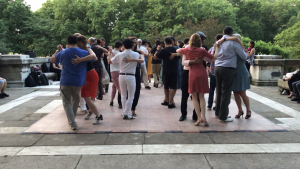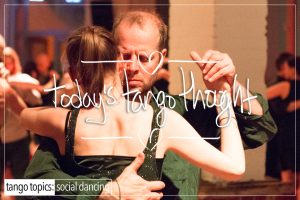What’s below is a small snippet of 13m:06s audio ‘podcast’ of Today’s Topic on the benefits and detractors of building community through the use of a Tango House. The podcast is free. 😉 Enjoy. Click on the picture above to ‘hear’ the podcast.
Tango Topics Podcast Excerpt:
“What I refer to as the tango ‘Haus’ idea. In this case this is the German spelling of ‘HAUS’. I just like the way it sounds. But we can use the American spelling of ‘House’. So a few years back and I may be bastardizing some history here. There was a tango house, and I’m not going to name the city, that grew up out of a U.S. based city. This community, at the time had a number of teachers in its area, and they were all using the typical model of how they wanted their students to learn to dance.
One dancer in particular decided “I’m just going to open up my house and have people come over and hang out and we’ll do our thing”. And it wasn’t a “I’ll set this up and do this to piss people off”. It became an outgrowth of them hanging out a lot, it just so happened that this particular person had a house all to themselves, they had all this space and they just moved all the furniture out, and ended up dancing in the available space. What essentially grew out of that was a small group of dedicated people that started to follow this one particular person. It was maybe five or six people at the beginning and then it slowly grew out to like 8 or 9, and then 10, and then 12 and then it started to grow exponentially. So much so that it quite literally outgrew that house and they needed to go look for a practica space. And that started weekly classes and then group classes and workshops and so on and so forth.”











